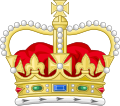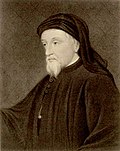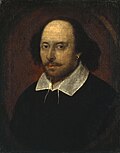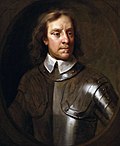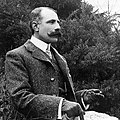 | Big Ben is the nickname for the Great Bell of the clock at the north end of the Palace of Westminster in London, and often extended to refer to the clock and the clock tower. The tower is officially known as Elizabeth Tower, as it was renamed in 2012 to celebrate the Diamond Jubilee of Elizabeth II. Previously it was known simply as the Clock Tower. Big Ben has become one of England's most prominent symbols. [46] |
 | Buckingham Palace is the historic London residence and the administrative headquarters of the reigning monarch of the United Kingdom. The palace is often the site of state occasions, and has been a focal point at times of national celebration and mourning. [47] |
 | The oldest regiment in the Regular Army in continuous active service, the origin of the Coldstream Guards lies in the English Civil War when Oliver Cromwell gave Colonel George Monck permission to form his own regiment as part of the New Model Army. [48] |
 | Morris dancing is a form of English folk dance normally accompanied by music. It involves rhythmic stepping and choreographed figures by a group of dancers, usually wearing bell pads on their shins. Morris dancers may use sticks, swords and handkerchiefs when dancing. The earliest known surviving English record of Morris dancing is dated to 1448. [49] |
 | The White Cliffs of Dover have great symbolic value in England because they face Continental Europe across the narrowest section of the English Channel, where invasions have historically threatened and against which the cliffs form a symbolic guard. Before air travel, crossing from Dover was the primary route to the continent, so the cliffs also formed the first or last sight of England for those making the journey. [50] |
 | The maypole is a feature in many towns and villages in England. There are maypole dances and celebrations around May Day, which celebrates the coming summer. People dress up and sometimes wear flower crowns; the maypole is decorated with ribbons and a wreath. [51] |
 | There are many local fêtes in spring and summer. These are outdoor events, usually organised by a volunteer committee, possibly the local church, which feature bunting, ribbons, and marquees with various attractions, and serve food such as tea and cake. [52] |
 | Stonehenge is an ancient monument constructed from around 3000 BC to 2000 BC that is considered a cultural icon and has been depicted many times in british culture, including on stamps. [53] This is demonstrated by the Royal Navy exploiting this sense of identification by naming an S-class destroyer and one of their S-class submarines HMS Stonehenge. [54] Thousands of people continue to gather at the stones every summer and winter solistice.. [55] |










